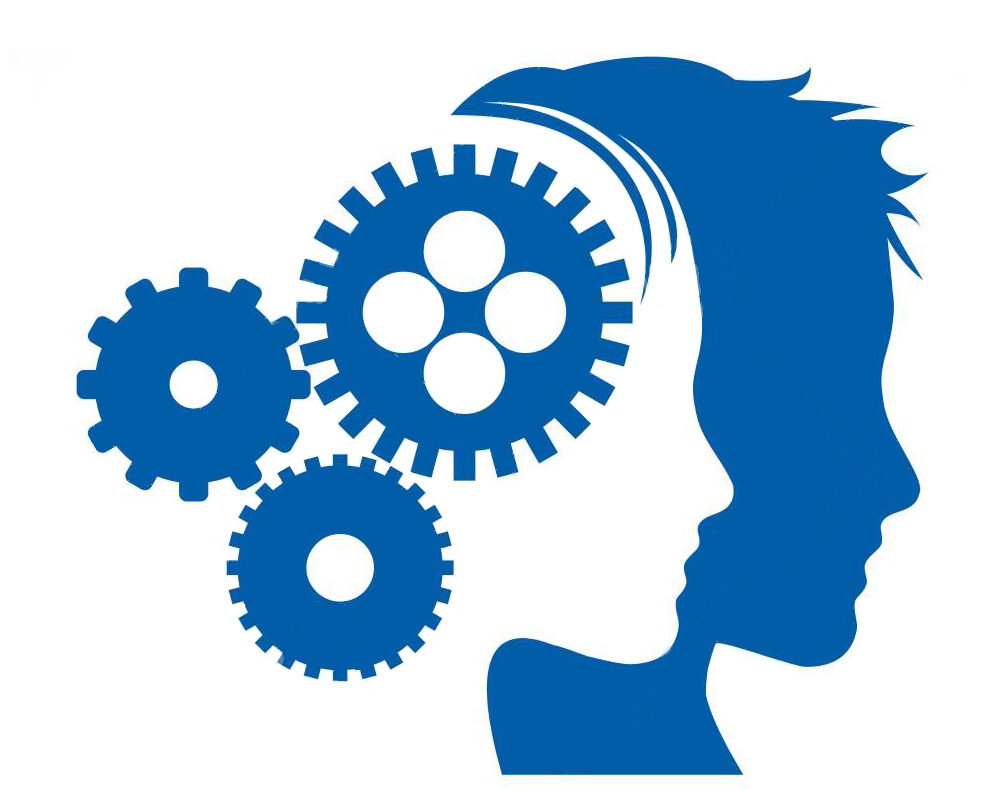Imagine a world where everything revolves around you – where your desires, dreams, and accomplishments take the center stage. In this fascinating glimpse into “Your Reality,” we explore the power and potential lying within your own perception. From the smallest moments that bring you joy to the grandest visions that shape your future, buckle up and embark on a journey of self-discovery that will leave you in awe of the incredible universe that exists within you.

The Nature of Reality
Perception and Interpretation
Perception and interpretation play a fundamental role in shaping our understanding of reality. As an individual, your reality is heavily influenced by how you perceive and interpret the world around you. Every moment, your senses are bombarded with an overwhelming amount of information, and your brain must process and make sense of this sensory input. However, it is important to recognize that perception is not an objective representation of reality, but rather a subjective experience that is heavily influenced by various factors.
Subjective vs. Objective Reality
Subjective and objective reality represent two different ways of understanding the world. Subjective reality refers to the individual experience of reality, shaped by personal beliefs, emotions, and cognitive filters. In contrast, objective reality refers to an external, independent reality that exists regardless of individual perceptions. While subjective reality is unique to each person, objective reality can be considered as a shared reality that is independent of personal perspectives.
Cultural and Social Influences
Culture and society play a significant role in shaping our perception and interpretation of reality. The cultural and social context in which you are immersed influences your beliefs, values, and behaviors, thereby shaping your understanding of reality. Cultural and social norms, expectations, and ideologies provide a framework through which you view and interpret the world. These influences can significantly impact how you perceive reality, leading to different perspectives and interpretations across various cultures and societies.
The Power of Perspective
Individual Perspectives
Your individual perspective is vital in influencing how you perceive and make sense of the world. Your unique experiences, beliefs, and values shape your perspective, creating a lens through which you interpret reality. What you consider important, meaningful, or relevant may differ from someone else’s perspective. Your individual perspective allows you to bring your own insights and understanding to various situations, but it also means that your reality may be different from others.
Shaping and Shifting Perspectives
While your perspective shapes your reality, it is not fixed or unchangeable. Your perspective can evolve and shift as you gain new experiences, knowledge, and exposure to different viewpoints. Engaging in open-mindedness, actively seeking out diverse perspectives, and challenging your own beliefs can broaden your understanding of reality. Shifting perspectives can lead to personal growth, empathy, and a more nuanced understanding of the complexities of the world.
Emotional and Cognitive Filters
Emotions and cognitive biases act as filters through which you perceive and interpret reality. Emotions can heavily influence your perception, leading to biased interpretations and judgments. For example, when you are in a positive mood, you may perceive situations as more favorable than they actually are. Similarly, cognitive biases, such as confirmation bias or availability heuristic, can skew your interpretation of information, leading to distorted realities. Understanding and managing these emotional and cognitive filters is essential in gaining a more accurate understanding of reality.
Constructing Reality
Beliefs and Worldviews
Beliefs and worldviews play a crucial role in constructing your reality. They act as the foundation upon which you interpret and understand the world around you. Your beliefs are shaped by a variety of factors, including upbringing, cultural and social influences, education, and personal experiences. These deeply ingrained beliefs influence how you perceive and interpret reality. It is important to critically examine and evaluate your beliefs to ensure they align with objective reality and promote open-mindedness.
Confirmation Bias
Confirmation bias is a cognitive bias that affects how information is processed and interpreted. It is the tendency to seek, interpret, and remember information that confirms preexisting beliefs or expectations while disregarding contradicting evidence. This bias can reinforce existing beliefs and create an echo chamber that distorts reality. Recognizing and challenging confirmation bias is essential in constructing a more accurate understanding of reality.
Selective Attention and Memory
Selective attention and memory also play a significant role in constructing your reality. Your brain naturally filters out irrelevant information and focuses on what it deems important or attention-worthy. This selective attention can cause you to miss or overlook certain aspects of reality, leading to an incomplete understanding. Furthermore, memory is not an objective record of past events but rather a reconstructive process that is influenced by various factors. Memories can be distorted or altered, further shaping your perception of reality. Being aware of the limitations of selective attention and memory can help you develop a more comprehensive understanding of reality.
Influence of Senses
Sensory Perception
Your senses serve as the primary means through which you perceive and interact with the world. Sight, hearing, taste, smell, and touch provide you with sensory input that your brain processes to construct your reality. However, sensory perception is not infallible. Illusions, misinterpretations, and sensory limitations can distort your perception of reality, leading to discrepancies between your subjective experience and objective reality.
Illusions and Misinterpretations
Illusions are deceptive perceptions that occur when your brain misinterprets sensory information. Optical illusions, for example, can create discrepancies between what you see and what is objectively present. Similarly, misinterpretations can occur when your brain fills in missing information or makes assumptions based on limited sensory input. These illusions and misinterpretations highlight the fallibility of sensory perception and its role in shaping your reality.
Multisensory Integration
Multisensory integration refers to the merging of information from different sensory modalities to create a unified perception of reality. Your brain integrates sensory information from various sources, such as sight, sound, and touch, to construct a coherent understanding of the world. This integration allows you to perceive depth, recognize objects, and navigate your environment. However, discrepancies or conflicts between different sensory modalities can lead to perceptual inconsistencies and challenges in constructing a unified reality.

The Role of Memory
Encoding and Retrieval
Memory plays a crucial role in how you construct and recall your reality. Encoding refers to the process of acquiring and processing new information, while retrieval involves accessing and bringing that information back into consciousness. Your experiences and interactions with the world are encoded into memory, forming the basis of your reality. However, memory is not a perfect record of past events, and the process of retrieval can be influenced by various factors, potentially altering your perception and understanding of reality.
Fallibility and Reconstruction
Your memories are not immune to errors, distortions, and omissions. Memory has been shown to be fallible, subject to various biases and distortions that can compromise its accuracy. Your brain reconstructs memories based on available information, personal beliefs, and emotional state, often filling in gaps and making assumptions. These reconstructions can shape your perception of reality, leading to the creation of false memories or the alteration of existing memories.
False Memories
False memories are memories of events that never actually occurred or memories that have been distorted to align with personal beliefs or expectations. The creation of false memories highlights the malleability of memory and its potential to construct an inaccurate version of reality. False memories can occur due to suggestion, imagination, or the blending of real and imagined events. Understanding the fallibility of memory is crucial in critically evaluating the accuracy of your own recollections and perceptions.
Cognitive Biases
Availability Heuristic
The availability heuristic is a cognitive bias that involves estimating the likelihood or frequency of an event based on how easily examples or instances come to mind. This bias can lead you to overestimate the prevalence of certain events if they are more vivid, memorable, or receive greater media attention. The availability heuristic can distort your perception of reality by emphasizing the salience of certain events while downplaying others that may be less accessible in memory.
Confirmation Bias
Confirmation bias was briefly mentioned earlier as a cognitive bias that influences how information is processed and interpreted. This bias refers to the tendency to selectively search for, interpret, and remember information that confirms preexisting beliefs or expectations. Confirmation bias can reinforce existing perspectives and limit your exposure to diverse viewpoints, hindering your ability to construct an accurate understanding of reality. Recognizing and overcoming confirmation bias is essential in fostering open-mindedness and promoting a more comprehensive perception of reality.
Anchoring and Adjustment Bias
Anchoring and adjustment bias is another cognitive bias that can impact how you perceive and interpret reality. This bias occurs when you rely too heavily on an initial piece of information (the anchor) when making subsequent judgments or decisions. The initial anchor can bias your perception, leading you to adjust your judgments or interpretations based on this starting point. Anchoring and adjustment bias can limit your ability to consider alternative perspectives or accurately assess the true value or significance of information, potentially distorting your reality.

Influence of Culture
Cultural Relativism
Cultural relativism refers to the recognition and acceptance of the inherent cultural differences in beliefs, values, and practices. Different cultures have their own unique ways of perceiving and understanding reality, shaped by historical, environmental, and socio-cultural factors. Cultural relativism encourages empathy, open-mindedness, and respect for diverse perspectives, allowing you to expand your understanding of reality beyond your own cultural framework.
Cultural Conditioning
Cultural conditioning refers to the process by which individuals internalize and adopt the beliefs, norms, and values of their society or culture. From an early age, you are exposed to cultural influences that shape your understanding of reality and influence your behaviors. Cultural conditioning can create a shared reality within a particular culture, shaping the way individuals perceive and interpret the world. Recognizing the influence of cultural conditioning is crucial in critically evaluating your own beliefs and understanding the potential biases and limitations of your cultural perspective.
Perceptual Differences Across Cultures
Perceptual differences across cultures highlight the impact of cultural influences on how reality is perceived and interpreted. Different cultures may prioritize certain aspects of reality or value different ways of knowing. For example, Western cultures tend to emphasize individualism and analytical thinking, whereas Eastern cultures may prioritize collectivism and holistic thinking. These differences in perception can lead to variations in interpreting the same events or phenomena, highlighting the subjective nature of reality and the influence of cultural factors.
The Illusion of Control
Desire for Control
The desire for control is a fundamental aspect of human nature. We seek to exert control over our lives and the environment to mitigate uncertainty and promote a sense of stability and predictability. This desire for control extends to how we perceive and interpret reality. We tend to search for patterns, connections, and explanations to make sense of the world, often attributing causality and control to events, even when the control is illusory. The desire for control can lead to a biased perception of reality, potentially distorting our understanding of what is objectively true.
Perceived Control vs. Actual Control
An interesting distinction exists between perceived control and actual control. Perceived control refers to the subjective belief or feeling of having control over events or outcomes, even when the objective reality may suggest otherwise. Actual control, on the other hand, refers to the tangible ability to influence or manipulate events. The disconnect between perceived control and actual control highlights how our belief systems and cognitive biases can shape our perception of reality, sometimes leading to an overestimation of personal control.
Uncertainty and Anxiety
Uncertainty is an inherent part of reality. The future is unpredictable, and events can unfold in unexpected ways. The desire for control and the need to reduce uncertainty often give rise to anxiety. Anxiety can further bias our perception and interpretation of reality, as we may be more prone to perceiving threats, overestimating risks, or engaging in catastrophic thinking. Managing anxiety and embracing uncertainty are crucial in developing a more balanced and accurate understanding of reality.

The Role of Language
Language and Thought
Language is a powerful tool that influences how you think, reason, and understand the world. Language allows you to label, categorize, and communicate your perceptions and interpretations of reality. The words and concepts available in your language shape your thoughts and influence the way you construct and articulate your reality. Different languages may have different structures, vocabularies, and grammatical rules, leading to variations in how reality is conceptualized and expressed.
Linguistic Relativity Hypothesis
The linguistic relativity hypothesis, also known as the Sapir-Whorf hypothesis, suggests that language influences thought and perception. According to this hypothesis, the structure and vocabulary of a language shape the way speakers think and perceive the world. For example, languages that have distinct words for different shades of a color may influence how speakers perceive and categorize those colors. While the linguistic relativity hypothesis remains a topic of debate among researchers, it highlights the complex relationship between language, thought, and reality construction.
Miscommunication and Interpretation
Language is not a perfect tool for communication. Miscommunication and misinterpretation are common occurrences, resulting from differences in language proficiency, cultural nuances, and individual understanding. The same words or phrases can be interpreted differently by different individuals, leading to misunderstandings and conflicting realities. Recognizing the limitations and potential for miscommunication in language is crucial in promoting effective communication and facilitating a more accurate understanding of reality.
Challenges in Understanding Reality
Reality vs. Perception
Understanding the distinction between reality and perception can be a significant challenge. Reality refers to the objective existence of things, events, and phenomena, whereas perception refers to how those objective realities are subjectively interpreted and experienced. Perception is inherently colored by personal biases, beliefs, and cognitive processes, making it difficult to separate perception from reality. Recognizing this distinction and remaining open to alternative perspectives is vital in navigating the complexities of understanding reality.
Objective vs. Subjective Truth
The concepts of objective and subjective truth add another layer of complexity to the understanding of reality. Objective truth refers to truths that are independent of personal perspectives or beliefs, while subjective truth refers to truths that are influenced by personal perspectives and experiences. Objective truth is often associated with scientific facts and empirically verifiable information, whereas subjective truth is grounded in individual experiences and interpretations. Navigating the interplay between objective and subjective truth is essential in constructing a comprehensive understanding of reality.
Exploring Different Perspectives
Embracing different perspectives is crucial in expanding your understanding of reality. Recognizing that reality is subjective and influenced by various factors allows you to engage with diverse viewpoints and challenge your own preconceived notions. Actively seeking out different perspectives, engaging in dialogue, and exposing yourself to different cultures and ideas can facilitate a more comprehensive understanding of the complexities of reality. By exploring different perspectives, you can broaden your horizons and cultivate empathy, leading to a more nuanced and inclusive perception of reality.
In conclusion, your reality is shaped by how you perceive and interpret the world around you. Perception, influenced by cognitive biases, cultural and social conditioning, and personal experiences, constructs your subjective reality. The distinction between subjective and objective reality, along with the role of language, memory, and senses, further complicates the understanding of reality. Challenges arise in navigating perceptual differences, cultural influences, and the illusion of control. However, by embracing different perspectives, critically evaluating beliefs, and recognizing the limitations of perception, you can construct a more comprehensive understanding of the multifaceted nature of reality.








